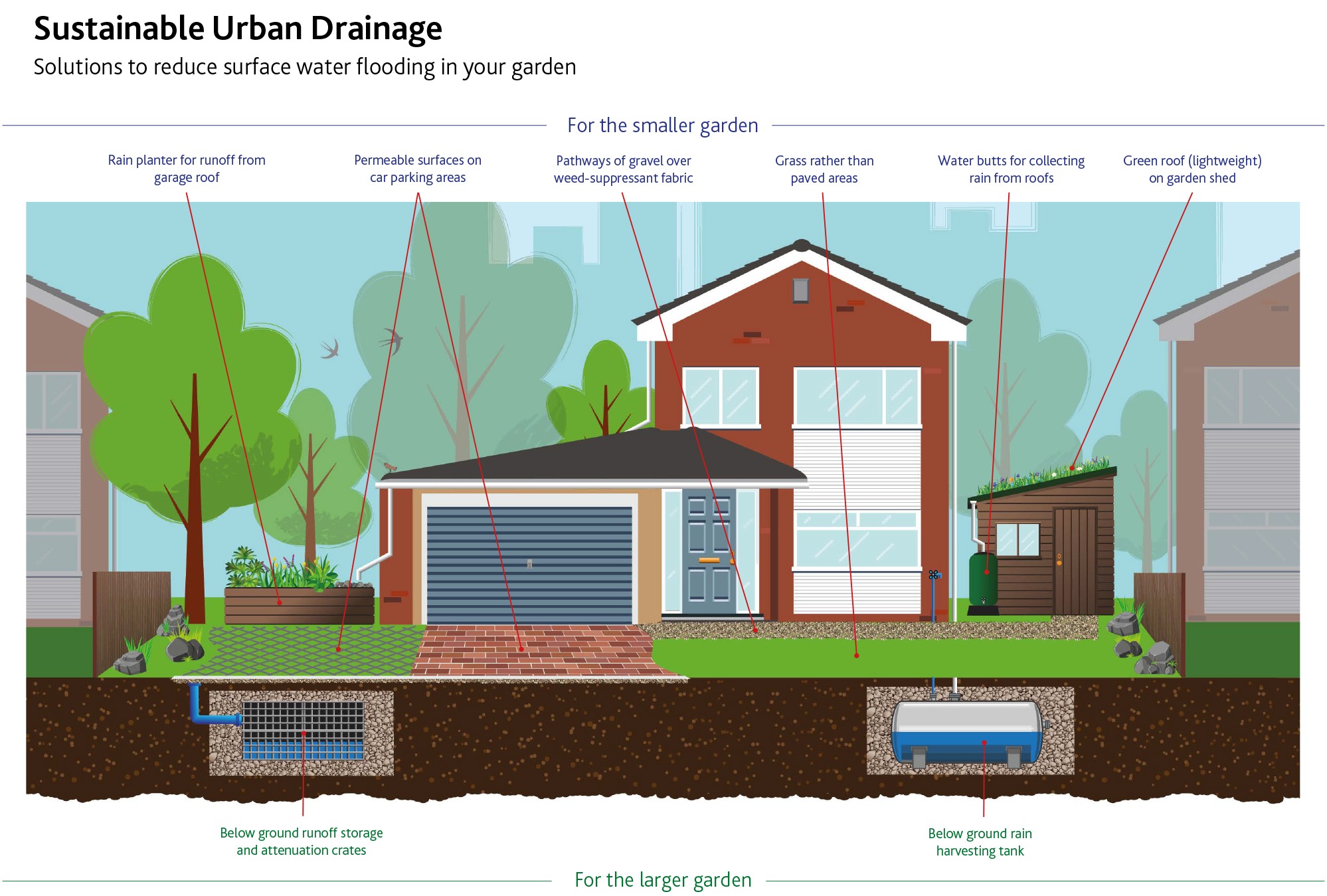“Please Don’t Make It Worse”: PRESS RELEASE
Flood Resilience Campaigner Calls for a New Code of Community Kindness During Flood Events
The government has announced that it will finally implement Schedule 3 of the Act, which mandates sustainable drainage (SuDS) in new developments.
This is excellent news for several reasons In particular, water will now be managed at a local, new development level. This means that communities nearby will now have peace of mind that new developments will not make flood risk worse for them. The new rules are being discussed now, with implementation anticipated for 2024.
Sustainable drainage systems – also known as SuDS – are designed to both manage the flood and pollution risks resulting from urban runoff by using a combination of ponds, swales, soakaways, tree pits, permeable paving, naming just a few methods.
As well as managing flash floods and reducing the risk of sewage spills, SuDS can clean-up polluted water running from roads, recharge depleted ground water supplies. This means it is also useful in times of water scarcity, and it provides beautiful blue/green spaces in our urban environments.

The good news is it is perfectly possible for all homeowners to incorporate SuDS to help make a difference now:
Ultimately, reducing the risk of flooding and water pollution by limiting the use of impermeable services and instead replicating natural drainage solutions will be welcomed by all, and help create a more resilient future for growing communities across the country.
Copyright 2023, Mary Long-Dhonau